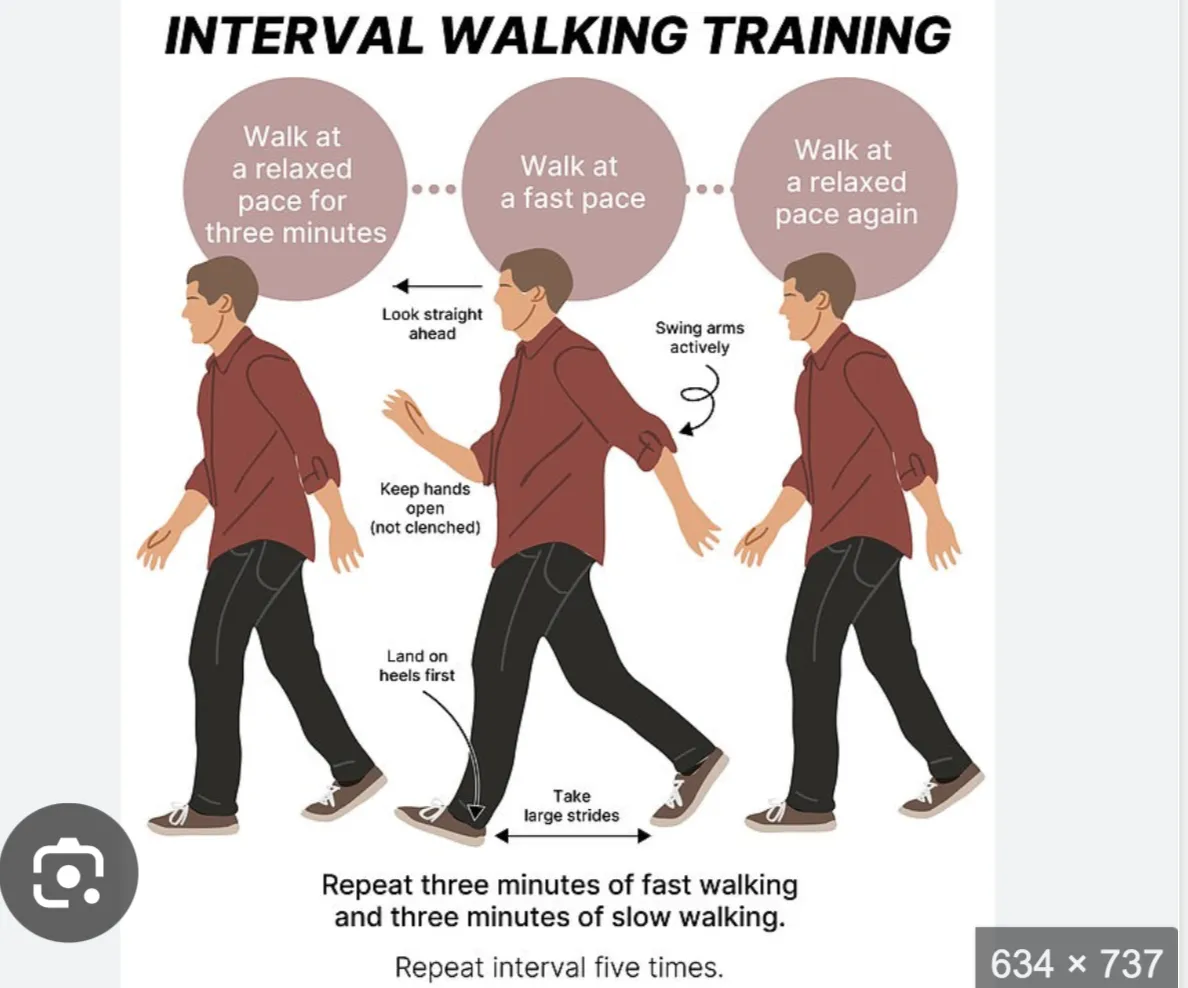
Make Those Steps Count. How To Turn Your Walk Into A Workout!
When I talk with new clients about their current exercise habits, a lot of them tell me they walk for exercise.
Brisk walking counts as aerobic exercise. It improves oxygen delivery throughout your body, reduces your risk of heart disease, stroke, diabetes, high blood pressure, and even certain cancers. Just 7,000 steps a day has been linked with a 50–70% reduction in early death.
One study found that 15 minutes of walking was as beneficial as 5 minutes of running.
All movement is good--don't get me wrong--but casual walking isn't aerobic exercise (cardio).
A brisk walk means you can talk, but not sing.
Guidelines define it as a pace where you'd cover a mile in 15 to 24 minutes. That's purposeful I-have-somewhere-to-be walking.
You can also check your heart rate. An approximate way to find your maximum heart rate is 220 minus your age. During moderate-intensity exercise (like brisk walking), your heart rate should be at about 50 to 70% of your maximum heart rate.
Have you heard the buzz about Japanese Walking?
It's essentially interval training, alternating slow and fast walking in 3-minute bouts.
Adults in their 50s and 60s who used this method improved strength, lowered blood pressure, and significantly boosted their VO2 max (a key measure of cardiovascular fitness linked to longevity).
Here’s how it works:
Walk slowly (about 40% of your max pace) for 3 minutes.
Walk briskly (about 70% of your max) for 3 minutes.
Repeat 5 times for a 30-minute session.
Start with determining your max pace. Figure out how fast you can walk before you feel the urge to break into a slow run.
Then use a timer or a step counter to find your slow and fast targets.
If your max walking pace is 90 steps in 30 seconds, your max pace is 180 steps per minute. Your 7/10 pace is 126 steps per minute, and your 4/10 pace is 72 steps per minute
I suspect that once you've done it a few times, you can intuit your pacing. If you walk a regular route, you might see that a certain interval gets you from a particular mailbox to the end of the block.
Do this 4 or more times a week, and it could add months--or years--to your life.
The Japanese walking method saves time, but 30 minutes will probably only clock in around 3,000 steps.
You'll want to combine it with more movement throughout the day--add a few short walks after meals, pace during phone calls, park a little farther away--and you’ll easily reach your movement targets.
While “10,000 steps” was a marketing gimmick, there are proven longevity benefits to getting 8,000.
Walking alone isn't enough.
Federal physical activity guidelines recommend at least 150 minutes of aerobic activity plus two or more strength-training sessions per week. Both types of physical activity need to be moderate intensity or higher.
There are a lot of muscle groups that we’re not exercising when walking. Strength training brings a whole list of added benefits--like lowering your risk of injury and improving mobility and flexibility.
Walking keeps you going.
Strength training keeps you getting back up.
Do both--for the long haul!